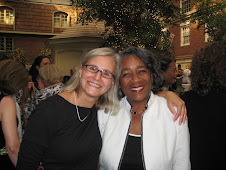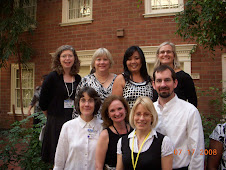I designed a unit to be implemented in a series of study skills days, and Doug Eischens, the school social worker, is team-teaching the unit with me.
During the Thinking Maps Unit students move from guiding questions on their lives in general to guiding questions that specifically deal with their academic habits and life as a student. Examining themselves as students will allow them to evaluate their study skills and school habits. The bridge map serves as the bridge between their lives in general and their lives in school.
Each map is presented in this sequence:
- Students learn the map by making one with personal information.
- Doug debriefs the personal information to blend the students' social/emotional needs with their academic needs.
- Students are taught practical ways to use the map for reading and lecture comprehension with content from their current English 10 course, social studies course, and/or science class.
Here's the lesson from the first day--
Tree Map
Jackie Teaches the Tree Map:
What was your youth culture like when you were in elementary school? (branches of tree map are recreation, clothing, and family traditions) Frame: Simultaneously jot down stories that go with the items. This map will be used first as a community builder since students will mingle and share their information. All students must share this information but will be told that ahead of time.
Doug Debriefs the Personal Information:
Introduction to the idea that sharing will happen after each map is completed, but students will only be asked to share what they are comfortable sharing. Doug plans to facilitate the after each map debriefs similar to how he runs his student support groups. The students really enjoyed this activity as a way to find out things that they had in common with other students in the room. Doug told them that a support network of friends at school is key, so this sharing of cultural backgrounds really helped that.
Jackie Makes Content Connections and Study Skill Applications:
I wanted to show the students some practical study skill uses for the tree map. I had the students make tree maps for the main character in their English 10 novel in their English notebooks. I have students in two different English classes, so I just did both novels on the white board at once. The English 10 students mapped Codi’s (Animal Dreams) clothes, recreation, and family traditions, and the boys in Guys 10 did the same three branches for Siddhartha. This activity helped students bring the characters to life and allowed them to make personal connections.
Then, I made the students pull out their history notebooks and look at their last lecture notes. I had the students create category titles for a tree map on Mesopotamia--and they came up with religion, literature, and government. They reviewed their notes and synthesized their notes in a tree map. Making a tree map for lecture reflection was hard for them to do, but the product was fascinating.
Stay tuned for future installments of how teaching the other maps goes in High School 101. The circle map is on tap for next week.










